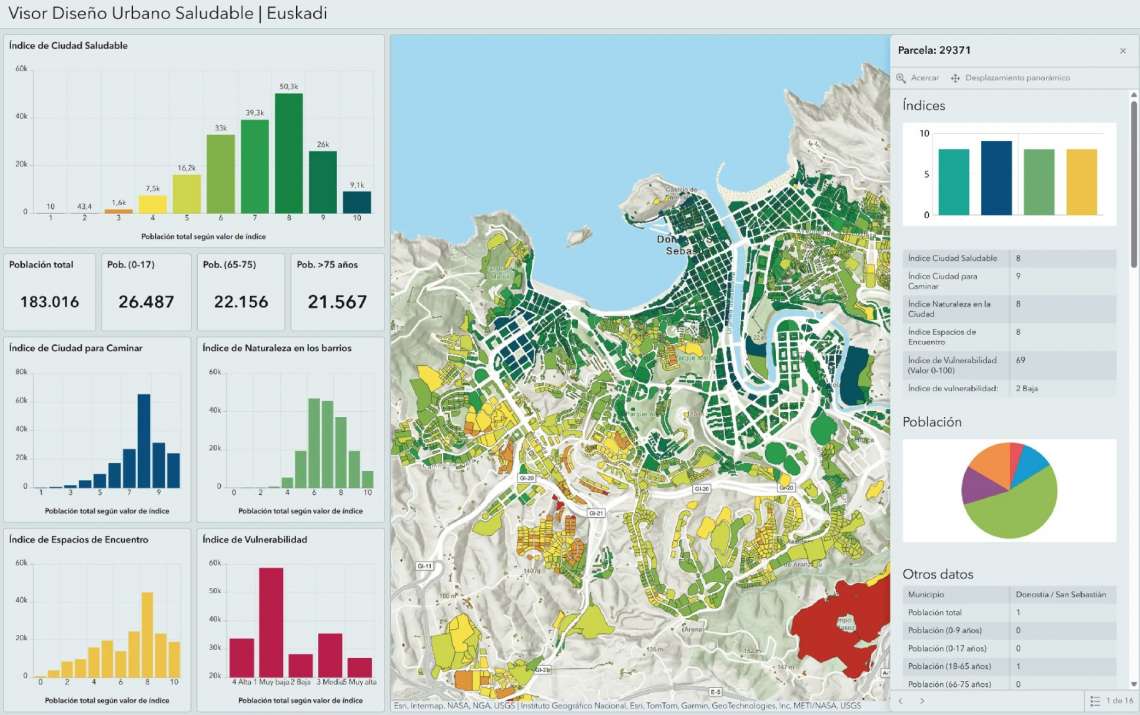Nueva publicación en Springer Nature: Healthy Urban Design: A Quantitative and Qualitative Analysis in the Basque Country (Spain)
Los investigadores Emilia Román, Gustavo Romanillos y Melanie Waidler publican un novedoso trabajo sobre la Ciudad Saludable aplicado al contexto de el País Vasco
13 nov 2025 - 13:57 CET
Como fruto de la invesitación realizada por un equipo de la Universidad Politénica de Madrid (Ester Higueras, Emilia Román y Melanie Waidler) y la Universidad Complutense de Madrid (Gustavo Romanillos - Grupo tGIS), se publica el capítulo de libro "Healthy Urban Design: A Quantitative and Qualitative Analysis in the Basque Country (Spain)", como parte del libro "Socio-Ecological Resilience and Sustainable Quality of Life", editado por Springer Nature.
Sobre la publicación:
Health is understood not merely as the absence of disease but as a complete state of physical and mental well-being. In cities, where large populations concentrate, the urban environment plays a critical role in shaping public health. Assessing this interaction is essential for informing effective urban plans, projects, and programs. The objective of this study is to address this need by diagnosing cities and neighbourhoods from a health perspective. Following an extensive review of key documents and international best practices, the Health Diagnosis Matrix (HDM) is proposed. This methodology, based on the Guide for Planning Healthy Cities (Fariña et al. in Guide to planning healthy cities. Ministerio de Sanidad, FEMP, 2022), integrates quantitative and qualitative analyses to comprehensively answer key health-related questions. The HDM enables a systematic evaluation of public spaces, supporting local governments in prioritizing interventions that enhance the quality of life in residential areas, contributing to the achievement of Sustainable Development Goals (SDGs) 3 and 11. Additionally, the study develops an online dashboard to visualise and analyse the results through interactive maps and graphs. The results provide a rich assessment of key urban determinants of health and a critical evaluation of the methodologies applied. Finally, the study acknowledges certain limitations and offers important recommendations to guide future research in similar contexts.

